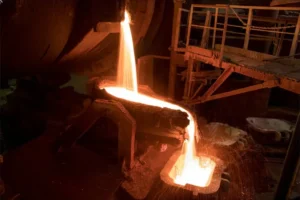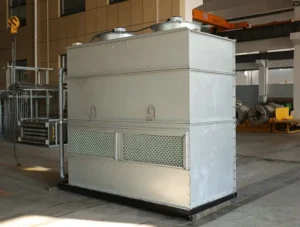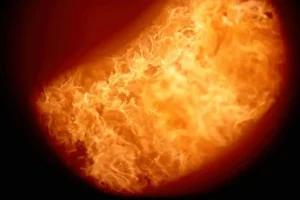В царстве металла таяния, индукционные печи, Электрические дуговые печи, и печи Cupola - три основных технологии плавки. Каждый играет незаменимую роль в современной промышленности, отличается своими уникальными техническими характеристиками и приложениями. В этой статье представлена всеобъемлющая вскрытие, Сравнение этих трех типов печи в четырех ключевых размерах: эффективность, расходы, воздействие на окружающую среду, и области применения, Предлагая углубленный анализ своих плюсов и минусов для предоставления подробной справки для лиц, принимающих решения, принимает решения.
Круглый 1: Битва за эффективность и производительность
Индукционная печь
Индукционная печь использует принцип электромагнитной индукции для генерации вихревых токов и тепла гистерезиса непосредственно внутри металлического заряда, достижение “Внутреннее отопление.” Этот уникальный метод отопления дает ему выдающуюся тепловую эффективность, часто достигая 60%-70% или даже выше.
- Преимущества:
- Высокий Тепловая эффективность: Тепло генерируется непосредственно внутри металла, Минимизация потери тепла.
- Быстрая скорость нагрева: Позволяет быстрый запуск и таяние, предлагая высокую гибкость производства.
- Точный контроль температуры: Облегчает точный контроль температуры расплавленного металла, Обеспечение качества продукта.
- Электромагнитный эффект перемешивания: Способствует однородному составу расплавленной ванны и помогает удалить примеси.
- Недостатки:
- Требования к строгому заряду материалы: Имеет особые требования к чистоте и размеру входных материалов.
- Ограничения плотности мощности: Таяние большого, Сплошные кусочки материала могут быть относительно неэффективными.
Электродуговая печь (ЭДП)
EAF растает металл, используя высокотемпературную электрическую дугу, генерируемую между графитовыми электродами и металлическим зарядом лома. Его концентрированная энергия обеспечивает мощные возможности плавления, Сделать его основным оборудованием для обработки лома в современной сталелитейной промышленности.
- Преимущества:
- Быстрая скорость плавления: Высокоэффективный при таянии больших и плотных зарядных материалов.
- Высокая температура печи: Может достичь температуры выше 3000 ° C, Включение плавки различных высококачественных сплавных сталей.
- Сильная адаптивность: Универсальный в обработке различных типов и форм зарядных материалов.
- Недостатки:
- Относительно низкий Тепловая эффективность: Значительное тепло теряется из -за излучения и конвекции из дуги, с термической эффективностью обычно вокруг 60%.
- Сложный контроль температуры: Нестабильность дуги делает точный контроль температуры..
- Высокое энергопотребление: Имеет высокое потребление электроэнергии на тонну стали, Установка значительной нагрузки на сетку питания.
Купола печь
Cupola - это историческая вертикальная печь вала, которая использует колу в качестве основного источника топлива и тепла, плавирование железного заряда, сжигая колу с принудительным воздухом.
- Преимущества:
- Высокое производство Емкость: Обеспечивает непрерывное плавление, Подходит для крупномасштабного производства железных отливок.
- Относительно простая операция: Зрелая технология с менее требовательными требованиями для операторов.
- В процессе металлургических преимуществ: Сжигание кокса не только обеспечивает тепло, но и картуризирует, уменьшается, и десульфурирует расплавленное железо.
- Недостатки:
- Самый низкий Тепловая эффективность: Большое количество тепла теряется с дымоходом, приводя к термической эффективности только о 55%.
- Неудобный контроль температуры: Трудно точно регулировать температуру и состав расплавленного железа.
- Неудобный Запускать/Неисправность: Процессы запуска и остановки сложны, сделать его непригодным для прерывистого производства.
Круглый 2: Экономика экономической эффективности
Индукционная печь:
- Первоначальные инвестиции: Относительно высокий, Особенно для печей большой емкости и связанных с ними систем питания.
- Эксплуатационные расходы:
- Высокая энергетическая стоимость: В первую очередь опирается на электричество, Определение эксплуатационных расходов очень чувствительно к ценам на электроэнергию.
- Обслуживание Расходы: Подкладка печи имеет относительно короткий срок службы, приводя к более высоким затратам на замену и обслуживанию.
Электродуговая печь:
- Первоначальные инвестиции: Чрезвычайно высокий, включая корпус печи, трансформаторы, электродная система, и оборудование для сбора пыли.
- Эксплуатационные расходы:
- Очень высокая энергия: Правда “Power Hog”; Потребление электроэнергии на тонну является основной стоимостью.
- Потребление электрода: Графитовые электроды являются основным расходным материалом со значительной стоимостью.
- Обслуживание Расходы: Техническое обслуживание для подкладки для печи и механических компонентов дорого.
Купола печь:
- Первоначальные инвестиции: Относительно низкий, с более простой структурой и более выгодной стоимостью строительства.
- Эксплуатационные расходы:
- Стоимость топлива: Кока -кола является основным драйвером стоимости, и его колебания цены напрямую влияют на производственные затраты.
- Относящийся к окружающей среде Расходы: Чтобы соответствовать все более строгим экологическим стандартам, Инвестиционные и эксплуатационные расходы для систем обработки дымовых газов значительно растут.
- Обслуживание Расходы: Техническое обслуживание подкладки относительно просты и дешевле.
Круглый 3: Ответственность и вызов зеленых операций
Индукционная печь
- Преимущества:
- Низкие выбросы: Использует электричество, не включает в себя не сжигание, и не производит практически никаких вредных газов, таких как диоксид серы или оксиды азота.
- Минимальные пары и пыль: Генерирует гораздо меньше дыма и пыли, чем купола или электрические дуговые печи.
- Лучшая рабочая среда: Производит относительно небольшой шум и тепловое излучение.
- Недостатки:
- Косвенные выбросы: Его высокое потребление электроэнергии означает, что его экологическое дружелюбие зависит от источника производства электроэнергии (например, ископаемое топливо против. возобновляемые источники энергии).
Электродуговая печь
- Преимущества:
- Слома стальной переработки: Служит основным оборудованием для переработки стальных ресурсов, Предлагая значительные общественные выгоды.
- Большой потенциал сокращения CO2: По сравнению с процессом с длинным маршрутом для печи, Выбросы CO2 могут быть уменьшены приблизительно 75%.
- Недостатки:
- Высокое потребление энергии: Требует огромного количества электроэнергии.
- Загрязнение шума и пыли: Генерирует интенсивный шум и большой объем пыли во время таяния.
- Опасные вещества: Вредные элементы, потенциально присутствующие в ломе (как цинк и свинец) может быть выпущен с дымовыми газами.
Купола печь
- Преимущества:
- С современными системами очистки газа, Выбросы загрязняющих веществ могут быть значительно сокращены.
- Недостатки:
- Серьезное загрязнение: Сжигание кокса производит большое количество пыли, диоксид серы, оксиды азота, и диоксины, Сделать его основным источником загрязнения в литейной промышленности.
- Сложно и дорого Относящийся к окружающей среде Обновления: Соответствие современным экологическим стандартам требует массовых инвестиций в технологическую модернизацию.
Круглый 4: Точное позиционирование в областях применения
| Особенность / Тип печи | Индукционная печь | Электродуговая печь | Купола печь |
| Основное приложение | Литая сталь, чугун, легированные стали, цветные металлы (медь, алюминий, цинк), и драгоценный металл таяния. | В основном сталь из лома для получения различных сортов стали; иногда используется для таяния чугуна. | Производство различных сортов чугуна, Особенно крупновалочное производство серого железа и пластичного железа. |
| Производственная шкала | Гибкий, Подходит для прерывистого производства от нескольких килограммов до нескольких десятков тонн. Идеально подходит для малых и средних., Многородное производство. | Крупномасштабное производство, Обычно используется на больших стальных мельницах с одноэтажными возможностями до нескольких сотен тонн. | Крупномасштабное непрерывное производство, Подходит для крупных литейных заводов со стабильными требованиями к выходу. |
| Качество продукта | Точный контроль над композицией и температурой, в результате чистого расплавленного металла и высококачественных продуктов. | На качество продукции сильно влияет качество лома сырья, но может быть улучшено посредством рафинирования процессов. | Контроль композиции относительно грубый; Консистенция качества расплавленного железа уступает электрическим печи. |
Последний вердикт: Не о лучшем, Но лучше всего подходит
Разрастание между индукцией, Электрическая дуга, и печи Cupola - не простой случай “выживание наиболее подходящего,” а скорее демонстрация “Каждый сияет в своей области” на основе различных промышленных потребностей и современного контекста.
- Индукционная печь, с его эффективность, точность, и чистота, стал лучшим выбором для плавки специальных сталей, Высококачественные отливки, и нерухозные металлы. Это идеальный вариант для тех, кто стремится к качеству продукции и гибкому производству.
- The Электродуговая печь, как герой круговая экономика, незаменим при переработке лома и короткопроцессовой стали. Его мощная мощность плавления и вклад в экономию энергии и сокращение выбросов затвердеет свои позиции в сталелитейной промышленности.
- Печь Купола, Несмотря на серьезные экологические проблемы, все еще имеет явное преимущество в крупномасштабный, недорогие производство чугуна. Через непрерывные технологические инновации и обновления окружающей среды, Современные куполы продолжают играть важную роль в конкретных секторах.
В конечном счете, Выбор печи зависит от множества факторов, включая конкретное позиционирование продукта компании, масштаб производства, Бюджет затрат, Экологические требования, и региональная энергетическая структура. Этот “Три королевства” Сага печей будет продолжать разворачиваться на стадии промышленного развития, Где технологические инновации и зеленый разработчик станут ключевыми факторами, определяющими их будущую судьбу.







